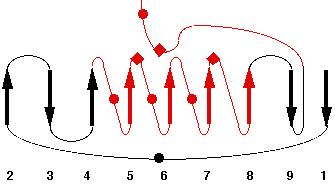4ZRE
Name : Crystal structure of SMG1 F278D mutant
Revelation date : 23-Sep-2015
Family : Lipase_3
Gene_locus : malgo-a8puy1
PDB file : ESTHER: header of PDB entry RCSB: Full entry
Comment
Xu, J., Xu, H., Hou, S., Liu, J.
Ligand :
References (1)
| Title : Structure of product-bound SMG1 lipase: active site gating implications - Guo_2015_FEBS.J_282_4538 |
| Author(s) : Guo S , Xu J , Pavlidis IV , Lan D , Bornscheuer UT , Liu J , Wang Y |
| Ref : Febs J , 282 :4538 , 2015 |
| Abstract : Guo_2015_FEBS.J_282_4538 |
| ESTHER : Guo_2015_FEBS.J_282_4538 |
| PubMedSearch : Guo_2015_FEBS.J_282_4538 |
| PubMedID: 26365206 |
| Gene_locus related to this paper: malgo-a8puy1 |
Representative scheme of Prolylcarboxypeptidase structure and an image from PDBsum server

